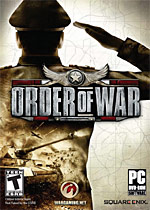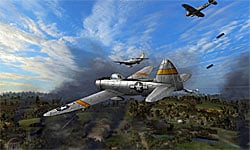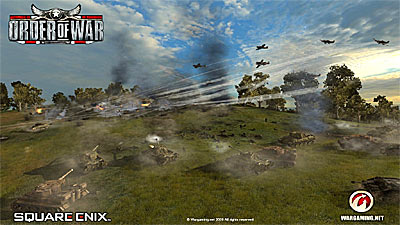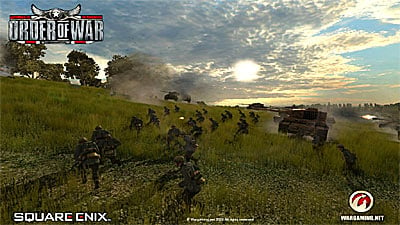Categories: * Game Analysis
It's time for another post in which I show how a mainstream videogame manages to capture the spirit of a particular aspect of journalism better than any existing edu-game on the same subject! This month's game is Beyond Good & Evil, an artifact that shares with Psychonauts the distinction of being a relatively late entry in the sixth generation of videogames that didn't sell nearly as much as it should have considering its critical reception and creative flair.

Everything one needs to know about BG&E is masterfully presented within the first thirty minutes of playing the game. A newscast cinematic opens the experience, with Hyllis's most popular newscaster Fehn Digler (Fehn, a Scandinavian surname, is apparently the forename of all "goat sapientes") announcing an oncoming wave of alien enemies called the DomZ (perhaps a riff on Ubisoft's own Petz series). He transfers control of the broadcast over to the voice of General Kex of the Alpha Sections - an intergalactic military that is purportedly protecting the people of Hillys from the DomZ. He begins, "Loyal Hillians, the impending battle will be a difficult one, but thanks to the Alpha Sections..." before being cut off by a fadeout to the protagonist, Jade, meditating on a rock. Both Fehn Digler and General Kex are instantly set in opposition to Jade by this somewhat disruptive cut. Although the name "Fehn Digler" connotes the historical form of investigative journalism known as muckracking, he in fact aligns with the propagandistic Alpha Sections. When the introductory DomZ invasion begins, Jade springs into action and is captured in a series of black-and-white photograph snaps--Jade is a rugged photojournalist, an independent force flying in the face of the Alpha Sections' media hegemony
Jade is a spunky female of unknown ethnicity. Her ambiguous features hearken back to the famous 1993 Time magazine cover claiming to show the "New Face of America" and precede by a year the most famous multi-ethnic videogame heroine, Alyx Vance of Half-Life 2. Her name carries with it connotations of East Asian and Mesoamerican ornamentation. The name "Jade" also indirectly appeals to the game's title, Beyond Good and Evil. The famous blaxploitation film Ebony, Ivory, and Jade features two female protagonists (one white, one black), and a male protagonist named Jade. Ebony and Ivory, black and white, traditionally invoke the concepts of Good and Evil. The third element, Jade, rests outside this dichotomy. Jade is mineralogically "tough," and its earliest use was as a sharp weapon--thus connoting both beauty and the ability to "cut through" to the truth of a situation. Also important to BG&E's endgame is the fact that a 19th century French scientist discovered that what was historically known as jade was in fact two different rocks.
The game's secondary protagonist is Pey'j, Jade's gruff pig "uncle." Pigs are significant in reference to jade in Chinese history. Some of the earliest depictions of a Chinese dragon, carved out of jade, are the zhulong or "pig dragon" ouroboros artifacts crafted in neolithic China. The Pig is the final entrant of the Chinese zodiac, having lost the Jade Emperor's race in mythological times. Accordingly, pigs in the Chinese zodiac are depicted as vulnerable, which explains why Jade often finds herself protecting her rotund uncle. Another characteristic of pigs in the Chinese zodiac that Pey'j isn't is naïve: from the beginning of the game, Pey'j is highly suspect of the Alpha Sections. His name is clearly a pun on the word "page," connoting both a medieval servant to a knight (in this case, Jade) and a unit of print media.
Despite featuring a strong female, multi-ethnic protagonist, BG&E mires itself in tedious cultural stereotyping. A Latino colleague watched me play the opening hour of the game, and the flamboyant simpering of the AI character Secundo made my face flair with shame for being a gamer. Some of the game's voice acting and sound design are so ethnically fetishistic and colonial that it was hard for me to stomach the opening acts.
The "animal sapientes" that inhabit Hillys are fairly derivative of the tropes established by Gullah folk stories of the "Bruh Rabbit" tradition. Now I have two words for you, words that I hope are never made manifest in code by a videogame ever again: Gullah Rhino. I get the joke--displaced Africans living on an island--but I'm not amused. So much effort clearly went into making Jade race-neutral in speech and facial features that I don't really understand why the makers decided to go with such hackneyed ethnic tropes for the Secundo and Mammago characters.
The IRIS Network is an intergalactic organization of operatives and "correspondents" that seek to disrupt the machinations of the Alpha Sections. Their primary modus operandi is the creation of counter-propaganda in the form of newsprint and radio. Calling themselves a "network" of course denotes network television news. The fact that their agents are called correspondents only deepens this connection. The root network of the Yellow Iris is used in natural water purification , a fact which might or might not be an intended analogy on the designers' part--the Network attempts to "cure" the media occlusion caused by the Alpha Sections' propaganda.
The irides of our eyes control the amount of light that reaches our retinas by expanding and contracting the pupil. Diseases of the irides directly affect one's ability to see; similarly, the IRIS Network also controls the information that Jade receives throughout the course of the game. Although a seemingly benevolent force (perhaps the Good to the Alpha Section's Evil), players and Jade immediately question the motivations of the IRIS Network after they introduce themselves to Jade through a deceit: they send Jade on a fool's errand into the heart of an ancient mine as a test of her abilities. Mr. Hahn's ridiculous transformation from the Cadillac-driving Mr. De Castellac to a blue collar taxi driver both confirms player suspicions that the Network is not to be trusted while connecting the organization to working class values. Jade finally meets with IRIS in the Akuda Bar, inside of which a dub song constantly drones a one-word chorus: "propaganda."
The gameplay of Beyond Good & Evil is almost entirely derivative of two Nintendo products: Ocarina of Time and Metroid Prime. That said, the fracturing of the self-contained adventure game protagonist into units of Jade/Pey'j and Jade/Double H is both a vital move on the part of more and more recent game designers and cause for quite a bit of realtime narrative and engaging puzzle platforming. The important connection for us is that derived from Metroid: Jade's camera functions almost identically to Samus's scanning visor. Not only can it take pictures, but it can also access data terminals. Photography comprises roughly 1/6 of one's time in the game, as players are practically required to snap nature photographs of plants, animals, and DomZ for a preservation society in order to maintain a steady stream of revenue. Perhaps predicting the recent crisis in print journalism, Jade's career as a photojournalist has fallen on hard times. The pictures in her studio are of the orphans she takes care of--not what one would usually expect to see in a professional reporter's darkroom. Before acquiring the nature photography job from Secundo, Jade doesn't have enough of a line of credit to afford basic power needs or transportation costs.
The use of nature photography, in which verisimilitude is demanded by the needs for preservation and education, is important in understanding the naïve assumptions about photographic truth upon which Beyond Good and Evil rely. Jade's mission from the IRIS Network is to infiltrate key Alpha Sections installations in order to photograph their unmasked faces and the plight of their hostages:
Every proof we can find relating to this conspiracy will bring us more and more support from the people. A general uprising would allow us to overthrow the Alpha Sections; if the revolt spreads we may be able to end this war, but we need photographic evidence to find out exactly what's going on[...]
Alpha is the transparency value in digital image manipulation. As a cohesive, unquestioned whole the Alpha Sections are completely oblique. By disrupting and photographing their operations, Jade will increase media transparency and arrive at "the truth." At the end of the game Jade's photographs, published under the pseudonym "Shauni" (a name which apparently shares a Hebrew root with Jeanne, meaning "God's Grace" and therefore associating Jade with Jeanne d'Arc's goal of driving the invaders from a homeland), do in fact bring about a revolution against the Alpha Sections.
Which leads one to ask, "Why, in a distant future full of anthropomorphized space animals and flying cars, would anyone believe in the integrity of a photograph?" Tweens know how to use Photoshop. Critics questioned Robert Flaherty's construction of early documentaries such as Nanook of the North roughly an entire century ago (in the 1920s). The game's title references Nietzsche's own Beyond Good and Evil, which demands that not that morality be abandoned outright but that philosophers throw away dated (neo-Platonic, Christian) concepts such as "truth," "knowledge," and "free will." Unfortunately, the game only serves to affirm the completely outmoded concept of documentary reality. The game's ending is somewhat revelatory, but it can't honestly be described as "cutting through to the truth." Players are hand-fed the narrative conclusion and its moral. What the game never explains is how the Alpha Sections gained power in Hyllis, we are told only that "the government was caught off guard." It doesn't explain why seemingly the entire populace suffers and accepts the blatant, omnipresent propaganda of Fehn Digler and General Kex. We don't learn much about how media control comes about, and we don't learn a feasible modus operandi for independent journalists.
In order to evolve, journalists might one day have to throw their claim to being able to discern and disseminate "truth." On the other hand, so-called "citizen journalists," if they hope to succeed in the disseminated future of newsmaking on the web, are going to have to learn that objectivity is more difficult to attain than the simple snapping of a picture. If only a game so apparently concerned with disrupting propaganda and news media hegemony could have helped light the way.









